Ten Narnia Resources
My oldest daughter just finished hearing The Chronicles of Narnia for the first time. After we finished The Last Battle, Kara asked wistfully, “Daddy, are there any more Narnia books?” I had to confirm what she already knew: there are only seven Narnia books.But she’s already looking forward to reading them again and again and again.
We utilized ten resources to enjoy Narnia, and I recommend them all:
 1. The Unabridged Books
1. The Unabridged Books
These are essential. All other resources merely supplement them.It is pure pleasure to read these aloud to your children.
I chose to get a boxed set in hardcover.

It’s also available in softcover.

Those sets have the same simple illustrations by Pauline Baynes sprinkled throughout them that I recall seeing when reading this set as a child.
This one-volume set (which I think is the same as this one) is large but very nice. It includes the original illustrations by Pauline Baynes, but they are hand-colored instead of black and white.
You can view thirteen of Pauline Baynes’s color illustrations and seven maps at the bottom of this page.
2. Graphic Novels
- The Magician’s Nephew: Graphic Novel (64 pp.)
- The Lion, the Witch and the Wardrobe: Graphic Novel (64 pp.)
Although these books horrify purists, I like them. I used them to introduce these two stories to Kara, and they helped draw her into the world of Narnia. She loves these books (though now she loves the unabridged books more). She loves pictures paired with stories; they engage her and stimulate her imagination.
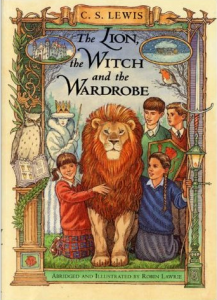 The first book of the seven books that we read is The Lion, the Witch and the Wardrobe, and we read the graphic novel first:
The first book of the seven books that we read is The Lion, the Witch and the Wardrobe, and we read the graphic novel first:- When we got to the part where the white witch kills Aslan, Kara started sobbing with grief.
- When we got to the next chapter and read the title, “The Spell Is Broken,” she cheerfully remarked through her tears, “That’s good news!”
- When I asked her if Aslan reminded her of anyone (and this is during her first time ever hearing the story), without blinking she replied, “Jesus.”
- The day after finishing the book, I asked her, “So what do you think of The Lion, the Witch, and the Wardrobe?” She replied, “Well, I don’t like the witch, but I like the lion and the wardrobe.”
3. Focus on the Family Radio Theatre
It’s abridged. The unabridged audio is about 31 hours, and this is about 22 hours. Among other things, this abridged version removes the few instances of objectionable language (see resource #9 below: “Some Caveats”).
Douglas Gresham, one of C. S. Lewis’s two step-sons, briefly introduces and concludes each book.
Related: Here are other Focus on the Family Radio Theatre stories:
- Amazing Grace: The Inspirational Stories of William Wilberforce, John Newton, and Olaudah Equiano
- Anne of Green Gables: An Endearing Story of a Young Girl Whose Spirit Could Never Be Broken
- At the Back of the North Wind
- Ben Hur: An Epic Tale of Revenge and Redemption
- Billy Budd, Sailor: A Classic Tale of Innocence Betrayed on the High Seas; Adapted from the Novel by Herman Melville
- Bonhoeffer: The Cost of Freedom; A Man Whose Message Could Not Be Silenced (cf. my thoughts)
- A Christmas Carol: By Charles Dickens
- Father Gilbert Mysteries: Collector’s Edition; All 9 Father Gilbert Mysteries
- The Hiding Place: The Acclaimed Story of Corrie Ten Boom
- The Legend of Squanto: An Unknown Hero Who Changed the Course of American History
- The Life of Jesus: Dramatic Eyewitness Accounts from the Luke Reports (cf. my thoughts)
- Little Women
- Les Misérables: Victor Hugo’s Masterpiece
- The Screwtape Letters: First Ever Full-cast Dramatization of the Diabolical Classic (cf. my review)
- The Secret Garden: Frances Hodgson Burnett; A New Way to Experience the Beloved Classic
- Silas Marner: The Weaver of Raveloe; The Transforming Power of a Child’s Love
- Traveling Home for Christmas: Four Stories That Journey to the Heart of Christmas (The Shoemaker’s Gift, The Gift of the Maji, Christmas Day at Kirkby Cottage, and Christmas by Injunction)
4. Unabridged Audiobooks
We also listened to the unabridged audiobooks by Harper Children’s Audio:
They are very high quality (though not in the same class as Jim Dale’s masterful reading of the Harry Potter series).
A different narrator reads each book, and all of them are English actors.
- The Magician’s Nephew, narrated by Kenneth Branagh (who stars in Henry V)
- The Lion, the Witch and the Wardrobe, narrated by Michael York
- The Horse and His Boy, narrated by Alex Jennings
- Prince Caspian, narrated by Lynn Redgrave
- The Voyage of the Dawn Treader, narrated by Derek Jacobi
- The Silver Chair, narrated by Jeremy Northam
- The Last Battle, narrated by Patrick Stewart
5. BBC’s TV Serial
- The Lion, the Witch and the Wardrobe (169 min.)
- Prince Caspian (56 min.)
- The Voyage of the Dawn Treader (109 min.)
- The Silver Chair (168 min.)
I watched these many times as a child on VHS and loved them. Now I own them on DVD so my children can enjoy them, too.
Compared to modern films, the pace is slow (which serves my daughter well) and the special effects tame.
The films stick pretty closely to the storyline of the books, but Kara was quick to point out ways that the films deviate (even if only slightly) from the books!
6. Blockbuster Films
Three of the Narnia books are adapted into blockbuster films (Wikipedia):- The Lion, the Witch and the Wardrobe (2005, Disney)
- Prince Caspian (2008, Disney)
- The Voyage of the Dawn Treader (2010, 20th Century Fox)
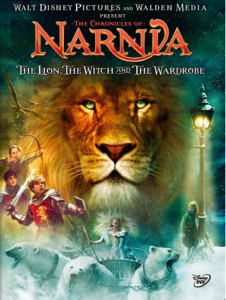

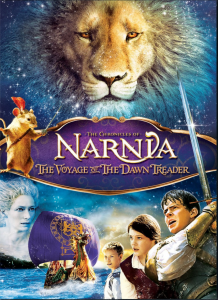
Pros:
- quality cinematography
- cool special effects
- good acting
- They focus on intense scenes, especially violent battle scenes. We skipped the really intense scenes and watched other intense scenes at 4x speed or higher because they are too intense for a little girl.
- They drastically revise the storyline of the books.
- They gut the books of their core message and turn them into feel-good messages about believing in yourself and having faith (I always ask, “Faith in what or whom?!”). For example, The Voyage of the Dawn Treader ends with Carrie Underwood singing “There’s a Place for Us.” Is the message of the book really that “we can be the kings and queens of anything if we believe” and that “exactly who we are is just enough”? Incredible. They turn a book steeped in Christian themes into narcissistic self-esteemism.
- Prince Caspian (May 17, 2008)
- Dawn Treader (December 11, 2010)
So, here is my gradebook on these movies as adaptations so far:
- The Lion, the Witch and the Wardrobe — B
- Prince Caspian — D minus
- The Voyage of the Dawn Treader — C
Here is how I would rate the movies as
stand alone ventures, if C. S. Lewis had never existed, and producers
had not been laboring under the burden of finding someone who understood
the books. Of course, we shouldn’t be too hard on them. They only have
many millions of dollars. How could they possibly find somebody who
understands the books? Give them a break.
See also Christopher Cowan, “C. S. Lewis, Prince Caspian, and Women in Combat: Part 1 and Part 2,” Gender Blog (May 20–21, 2008).
- The Lion, the Witch and the Wardrobe — A
- Prince Caspian — B
- The Voyage of the Dawn Treader — A minus
7. Theater
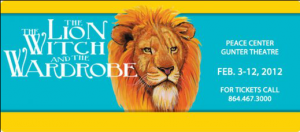 It just so happened that a nearby play of The Lion, the Witch and the Wardrobe coincided with our reading the Narnia books.
It just so happened that a nearby play of The Lion, the Witch and the Wardrobe coincided with our reading the Narnia books.It was Kara’s second play, and she loved the experience. But as with the film adaptations, she disliked how much artistic license the play took with the storyline. (I agree.)
8. Pretending
We (mostly my dear wife!) have spent dozens of hours play-acting with Kara as all sorts of Narnia characters. Kara lives in an imaginary world, and she constantly reenacts scenes and improvises new ones using the characters from the stories (and sometimes conflates imaginary worlds: Narnia meets Winnie the Pooh!).It can get exhausting living in this pretend world, but it’s worth it. It’s good for her on so many levels (e.g., see Nurture Shock, ch. 8).
We took our time enjoying the seven books, spending about two to three weeks in each one. We read each at least three times before moving on to the next one:
- I read the unabridged version aloud once.
- We listened to the abridged version by Focus on the Family Radio Theatre at least once.
- We listened to the unabridged version at least once.
9. Some Caveats
Kevin Bauder’s “The Christian and Fantastic Literature—Part Six: The Chronicles of Narnia” (In the Nick of Time [March 25, 2005]) praises the Narnia series but adds two caveats:
This is not to say that the story is
without flaws. In fact, it has two defects that sharply limit its
usefulness. A discussion of the Chronicles would not be complete without
mentioning these defects.
First, Lewis sometimes puts profane language in the mouths of his characters [e.g., taking the Lord’s name in vain and Uncle Andrew’s repeated line in The Magician’s Nephew].
To be fair, Lewis would probably not have regarded these uses as
profanity. Most likely he would have argued that the language was not
gratuitous and, therefore, was not speaking in vain of holy things. This
is not convincing, however. A certain number of oaths serve no apparent
purpose other than to add color to the story. They do cross the line
into profanity, which is especially disappointing in stories that were
written for children. Even though these occasions are rare, once is too
often.
Second, some of Lewis’s theology was
aberrant, and one or two of his quirks do show up in these stories.
Probably the most serious is Lewis’s inclusivism. In the final story (The Last Battle)
a young worshipper of the demon Tash is admitted into the “true
Narnia”—Lewis’s version of heaven. Lewis uses Aslan to explain that
whatever worship was offered sincerely to Tash was really offered to
Aslan. Such episodes reflect one of the errors of Lewis’s theology,
namely, that all sincere people can be received by God, even if they
have not received the truth of Christianity. This is not a minor error.
The error is compounded precisely because
the fantastic presentation makes it seem appealing and palatable. The
flaw is magnified further by being offered to children who cannot be
expected to recognize it for what it is. Lewis’s story has the power to
capture the child’s imagination and to render it sympathetic to inclusivism before the child ever develops the capacity to think critically about the issue. This is a serious matter.
Kevin DeYoung’s “Cautions for Mere Christianity” (January 28, 2011) highlights “two significant problems” with Mere Christianity, and the second in particular appears in the Narnia series:- Lewis rejects a penal substitutionary atonement.
- Lewis “believed in what we might roughly call ‘anonymous Christians.’ That is, people may be saved through Christ without putting explicit faith in Christ.”
10. Douglas Wilson’s Book on Narnia
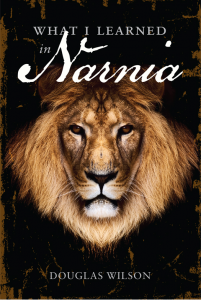 I read this book three times—twice with my ears and once with my eyes:
I read this book three times—twice with my ears and once with my eyes:
Douglas Wilson. What I Learned in Narnia. Moscow, ID: Canon, 2010.
I listened to this audiobook both before and after reading the series
with my daughter, and then I read it and marked it up. Wilson draws
insightful lessons from the Narnia stories.I was going to share some excerpts, but I highlighted far too many pithy, shrewd observations to fit here.
Relatively few books are worth reading a second or third time. This is one of them.
Some trivia: My favorite character (other than Aslan, of course) is Puddleglum. As Wilson says, “Puddleglum is a character who has a comically dour and gloomy exterior, but he turns out to be quite useful, fiercely loyal, and suspicious about the world in all the right ways” (p. 91).
Related
Articles- “That’s Why It’s Called Progressive Sanctification” (Eustace Scrubb illustration)
- “Is C. S. Lewis the Patron Saint of American Evangelicalism?”
- C. S. Lewis, “On Three Ways of Writing for Children,” in Of Other Worlds: Essays and Stories (New York: Harvest, 1966), 22–34.
- Alan Jacobs, “The Chronicles of Narnia,” in The Cambridge Companion to C. S. Lewis (ed. Robert MacSwain and Michael Ward; Cambridge: Cambridge University Press, 2010), 265–80.
- Thomas C. Peters, “The Chronicles of Narnia,” in Simply C. S. Lewis: A Beginner’s Guide to the Life and Works of C. S. Lewis (Wheaton: Crossway, 1997), 77–110.
- George Sayer, “Into Narnia,” in Jack: A Life of C. S. Lewis (Wheaton: Crossway, 2005), 311–19.
- Into the Wardrobe—a C. S. Lewis web site
- Alan Jacobs, The Narnian: The Life and Imagination of C. S. Lewis (San Francisco: HarperOne, 2005).
- Paul F. Ford, Companion to Narnia: A Complete Guide to the Magical World of C. S. Lewis’s The Chronicles of Narnia (2nd ed.; San Francisco: HarperSanFrancisco, 2005). Includes 21 illustrations and 11 diagrams. Abridged: Pocket Companion to Narnia: A Guide to the Magical World of C. S. Lewis.
- Planet Narnia: You may find Michael Ward’s thesis fantastical at first, but at the end you’ll be much less skeptical if not convinced. Watch BBC’s The Narnia Code, and read one of his two books: Planet Narnia: The Seven Heavens in the Imagination of C. S. Lewis (Oxford: Oxford University Press, 2008), which is the longer and more academic version, or The Narnia Code: C. S. Lewis and the Secret of the Seven Heavens (Carol Stream, IL: Tyndale House, 2010).
- Colin Duriez, A Field Guide to Narnia (Downers Grove: IVP, 2004). The cover says, “An Overview of the Life and Word of C. S. Lewis | A-to-Z Coverage of Narnian Beings, Places, Things and Events | An Introduction to Key Spiritual Themes.” It’s an accessible, brief introduction (240 pp.). Cf. Colin Duriez, The C. S. Lewis Encyclopedia: A Complete Guide to His Life, Thought, and Writings (Wheaton: Crossway, 2000).
- Christin Ditchfield, A Family Guide to Narnia: Biblical Truths in C. S. Lewis’s the Chronicles of Narnia (Wheaton: Crossway, 2003). Two later books by Ditchfield repeat corresponding sections from this book but include illustrations by Justin Gerard: (1) A Family Guide to The Lion, the Witch and the Wardrobe (Wheaton: Crossway, 2005) and (2) A Family Guide to Prince Caspian (Wheaton: Crossway, 2008).
- Kurt Bruner and Jim Ware, Finding God in the Land of Narnia (Wheaton: Tyndale House, 2004).
- Brian Sibley, The Land of Narnia (New York: Harper & Row, 1990).
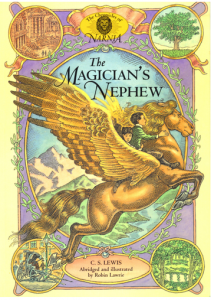

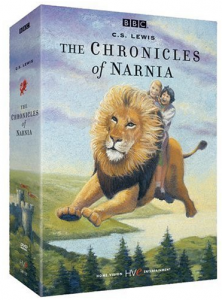
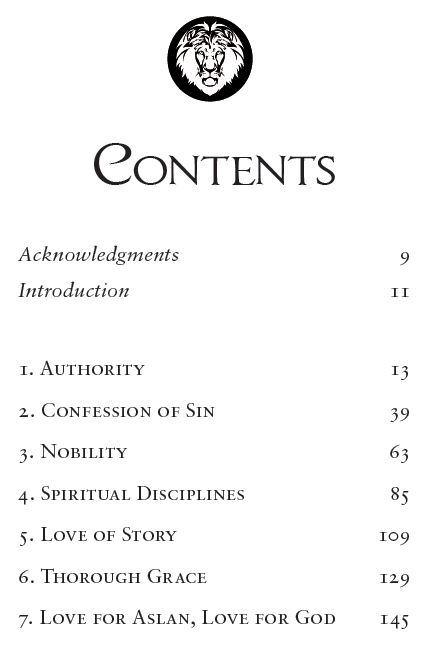
No comments:
Post a Comment